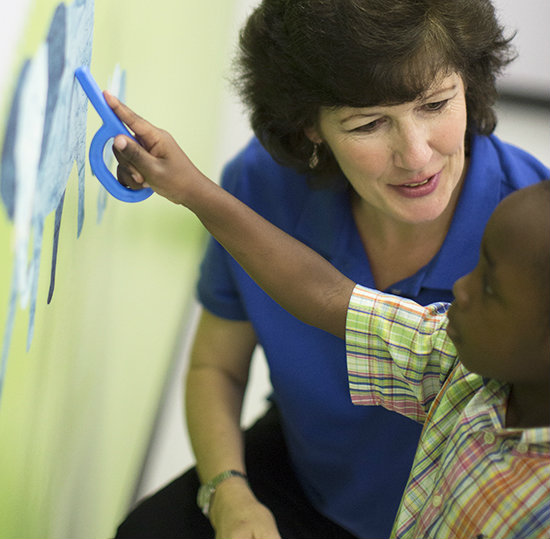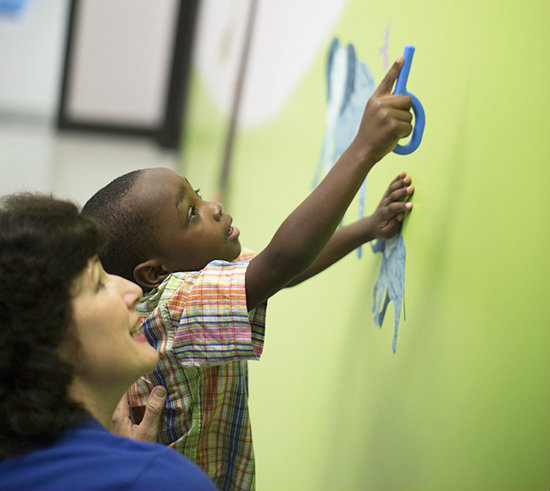Using the Grabber to Assist Pointing / Joint Attention
Posted by Debra C. Lowsky, MS, CCC-SLP on 27th Jun 2017
Back when my daughter was about 8 or 9 months old, I remember carrying her out to the car one day, and on the way she pointed up to an airplane in the sky. I immediately reinforced this by saying something along the lines of: "Yes, that’s right! That’s an airplane. Airplane. See the airplane?”
By pointing, she was sharing information with me. She was telling me that she saw an airplane in the sky, and she wanted me to see it, too.
That’s the first part of what's called joint attention - pointing to an object, person, etc. The second part of joint attention is when the child then looks at you (making eye contact to make sure you're paying attention). And the final part is when the child returns their gaze back to what they were looking at. So the child points to an object, looks at you, and then looks back at that object again.
.

.
Why is joint attention important? Even at a young age, babies are developing the building blocks of social interaction. Pointing (and looking at you to make sure you're paying attention) is an early form of communication. With or without words, they're saying "Look! Do you see what I'm seeing?" Joint attention is also a precursor for vocabulary, comprehension, and more. Not developing this skill can often be a red flag for possible developmental delays.
.

.
When practicing joint attention in speech therapy, I noticed that not all children were able to form their fingers into a pointing position. I would show them, demonstrate on my hand, and shape their hand into a point, but sometimes it just wouldn’t register.
I thought - If only I had something that they could wrap their hand around, something they could hold in their hand as a tactile cue.
I always have a Grabber around, so I gave it a shot, and it worked like a charm! The extension of the P provides support/guidance for the pointer finger, while the rest of the fingers can grasp the loop.
Especially if the child is disorganized motorically, holding on to the Grabber this way can help them physically feel how to position their hand to point, isolating the pointer finger from the rest of the hand.
It’s an activity I've used many times since then, and I hope you find it helpful, too!
Debbie
Debra C. Lowsky, MS, CCC-SLP
.

